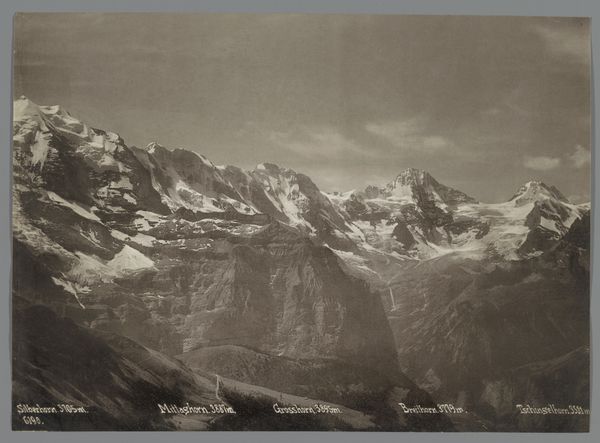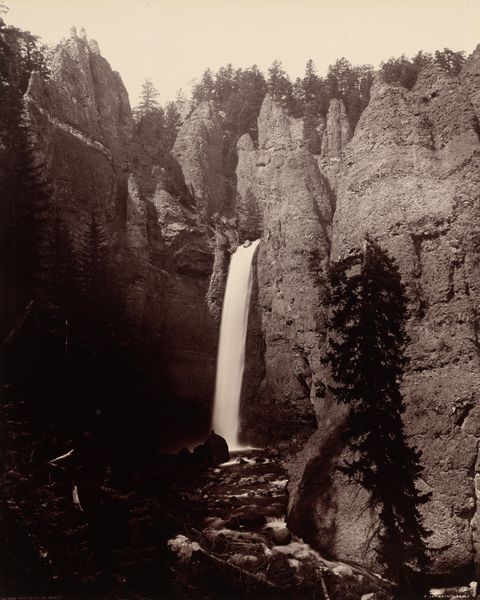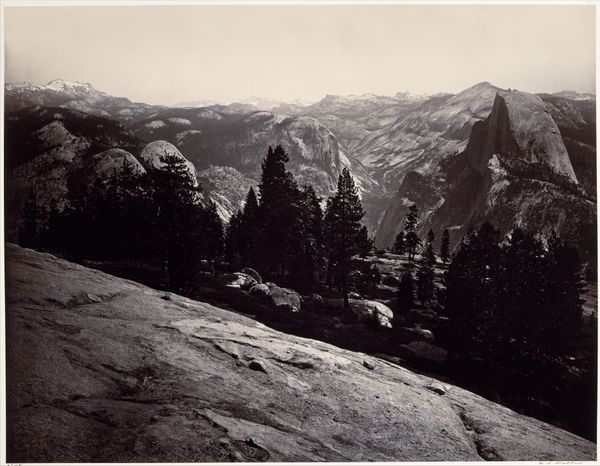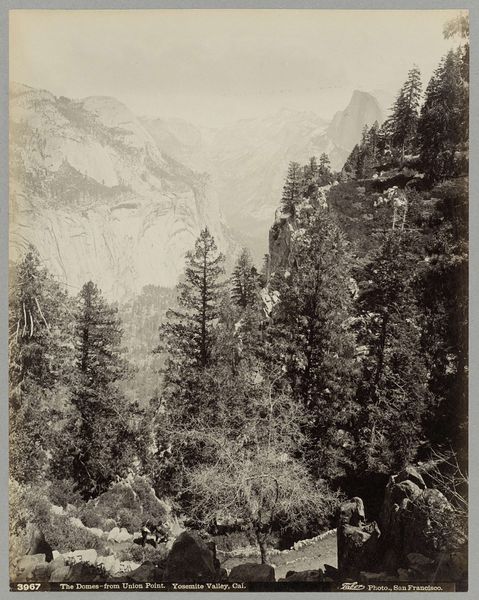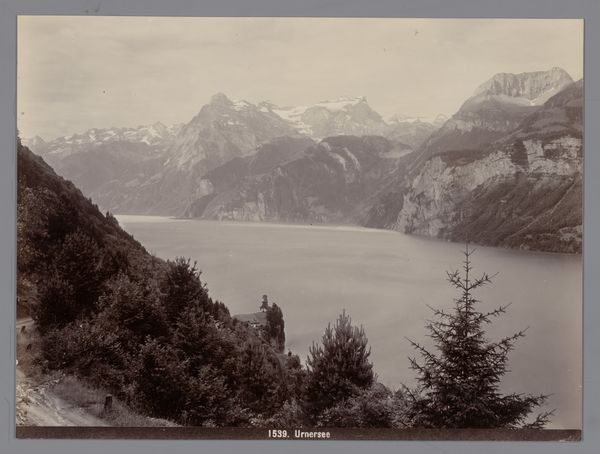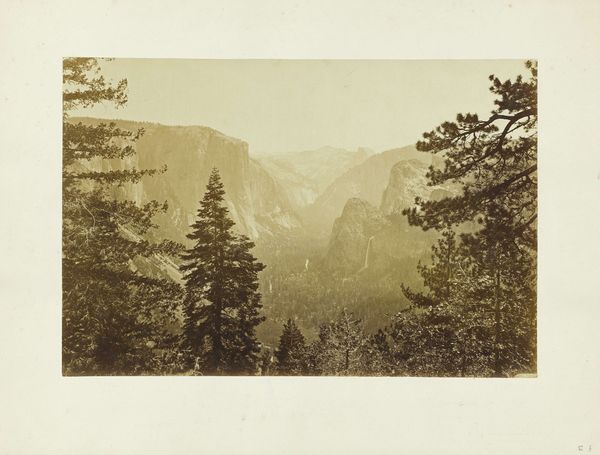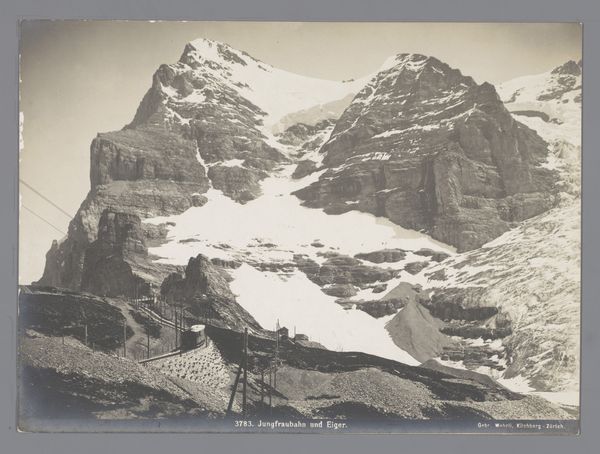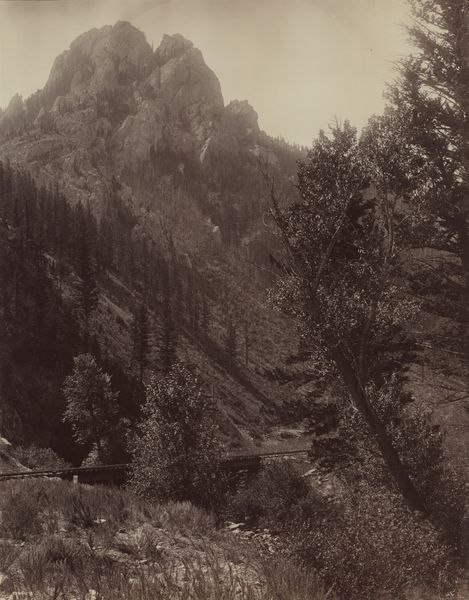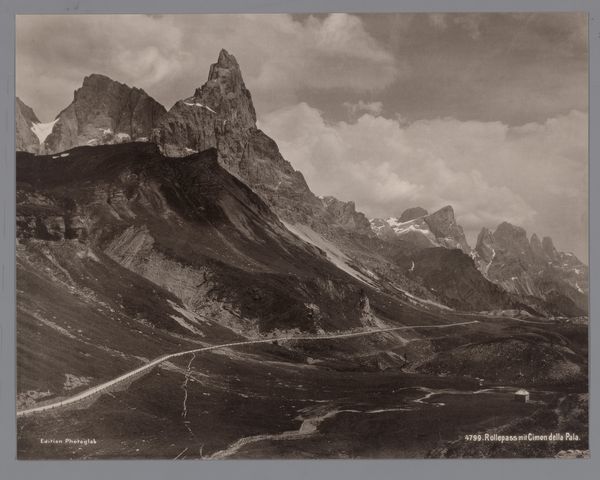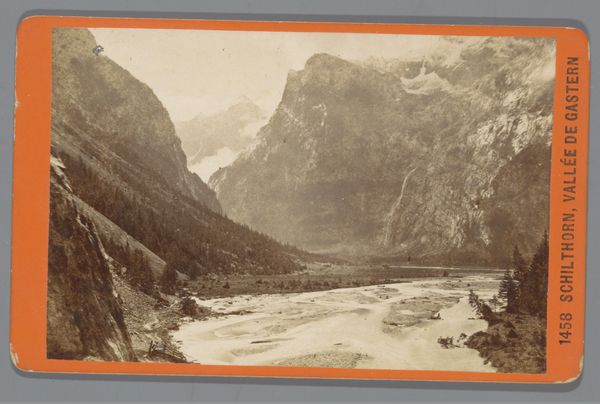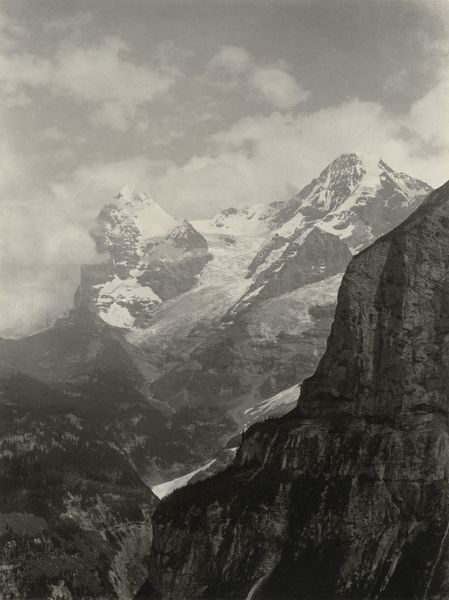
print, photography
#
pictorialism
# print
#
landscape
#
photography
#
geometric
Dimensions: height 209 mm, width 268 mm
Copyright: Rijks Museum: Open Domain
Editor: So, this is "Stelvio-pas en berg 'Madatscherferner', Italië", taken between 1890 and 1910 by Photoglob & Co. It's a photograph, a landscape print, of this imposing mountain scene. I'm struck by how the road almost disappears compared to the scale of the glacier. What jumps out at you when you see this? Curator: I notice how this photograph captures not only the grand vista, but also the marks of human intervention. Look at the meticulous construction of the road, the way it’s carved into the mountainside. The placement suggests control and exploitation, framing nature as something to be conquered or traversed for commercial gain. The telephone pole too is very interesting from a materialist lens, because it reveals something about modernism's reach into the alpine landscape and, thus, also indicates something about capital's circulation and value extraction during the period. What kind of labor made the image and what social contexts motivated it? Editor: That’s a compelling point. The road becomes more than just a road. The materiality of the photograph itself—the specific photographic process used—what does that tell us? Was it mass-produced, or a more artisanal process? Curator: Exactly. The process likely involved significant labor, from the photographer and darkroom technicians to the distributors. The very act of producing and circulating these images speaks volumes about the industrialization of leisure and tourism and of what it represents when people “consume” images in contrast to engaging with artworks using paint, canvas, and other traditionally art-focused mediums. Editor: It's like the photograph becomes a commodity itself. I'd never considered the materials and labor behind these older landscape photos quite so thoroughly! It opens up a completely different layer of understanding. Curator: Precisely. It allows us to question whose stories are being told, and how the means of production shapes that narrative. Thinking about it that way has greatly reshaped the field. Editor: It definitely shifts my perspective. Thanks!
Comments
No comments
Be the first to comment and join the conversation on the ultimate creative platform.
